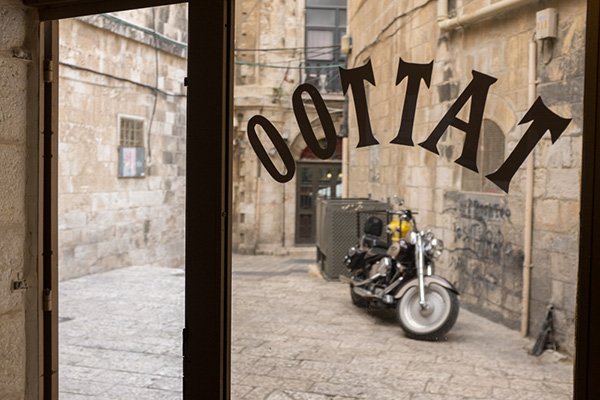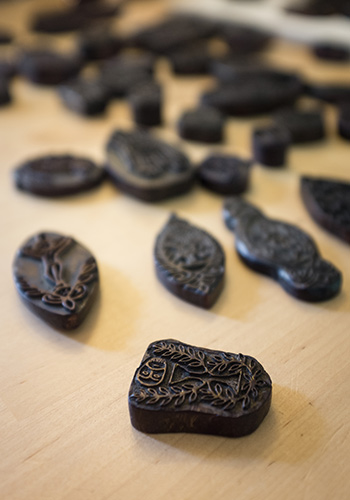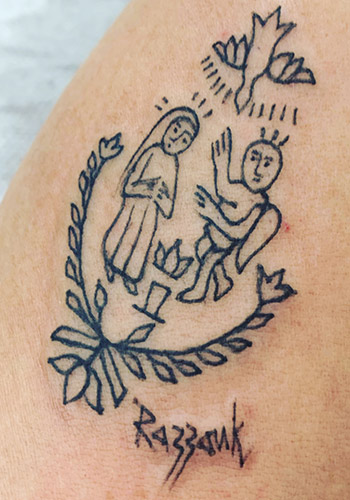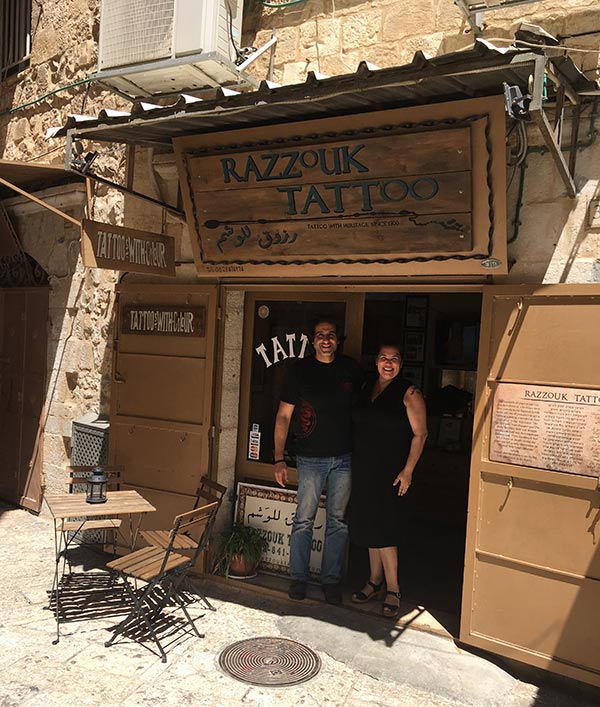Subtotal: $
Checkout-

Grateful for Each Breath
-

Care, Pray, Trust, Obey
-

Uncanny Homes
-

Schooling Hope
-

When the Sickness Is Over
-

The Home Is the School
-

Grieving Alone, Together
-

The Art of Dying
-

Scraps and Ruins
-

Clean House
-

Psalms for the Sick
-

The Book of Repose
-

Breaking the Fast in a Broken World
-

Sister of the Four
-

Remember When...?
-

The Rawness of the World
-

Precious Friend: What’s Your Victory Song?
-

The Abomination of Desolation
-

Philip Larkin’s “The Trees”
-

Shutdown Hospitality
-

Rejoicing in Apocalypse
-

By the Lights of Brush and Night
-

Learning to Stay
-

Apart Together
-

A Pain in the Navel: Letter from Bogotá
-

The Eternal Questions Illustrated
-

Fellow Feeling in a Crisis
-

Of Ducklings and Baby Fish
-

Service from Suffering
-

Patience in Lockdown
-

A Unique Time of God?
-

Mother Peregrine
-

This Too Shall Pass?
-

A Time for Regeneration
-

The Hard Work of Conversion
-

Tinned Fruit in Times of Famine
-

Floodplain
-

When the Church Doors Close

The Pilgrims’ Mark
A Coptic tattoo artist marks the journey to Jerusalem.
By Kelley Nikondeha
April 6, 2020
The Holy Land Bikers rode 3,500 miles from the California coast, winding through seven states on Harleys headed for Sturgis, South Dakota. The founder, Wassim Razzouk, documented their pilgrimage in a series of videos on Facebook. When they arrived, the small town brimming with bikes and enthusiasts welcomed them to the seventy-ninth anniversary of the Sturgis Motorcycle Rally. Wassim filmed the spirited downtown scene, Main Street flanked with motorcycles catching the sun, crowded with bikers pushing to see the bikes, booths, and shops. “This is the walk,” he said, “this is like doing the Via Dolorosa in Jerusalem.”
A few months later Wassim rides his Harley through the Jaffa Gate into the Old City. He turns onto Saint George Alley, parking his bike at an angle. Once the helmet comes off he greets me and unlocks the metal doors to his studio. We cross the threshold into Razzouk Tattoo. This is where he carries on his family legacy of tattooing pilgrims.
Wearing a black tee with Sturgis emblazoned across the front, he explains that this ride was a pilgrimage of sorts that allowed him to share in the joy of fellow bikers. On the last day he stood in the threshold of a tattoo shop on Main Street, contemplating a tattoo to mark the journey. But he walked out. “The tattoo would not mean the same thing as the ones we give here,” he says.
But the time in Sturgis reminded him of the joy and anticipation pilgrims hold. They travel to Jerusalem with the same sense of longing and desire to be with others who share their devotion, he says. People enter the Holy City and come to Razzouk Tattoo carrying all those emotions. He honors their arrival and certifies their pilgrimage with a tattoo from a rich and storied tradition passed from one generation to another until it was entrusted to him, the twenty-seventh generation in the Razzouk line.

Razzouk Tattoo shop in Jerusalem Photography by Erin Wilson
In the shop with us sit his two sons, the twenty-eighth generation. “It’s a huge responsibility,” says Nizar, a serious sixteen-year-old, “but I’ve known since I was little that this is what I wanted to do.”
“I’ve taught my sons to prepare the night before to receive pilgrims, to be sober-minded and ready to host their hopes as they arrive to the shop each morning,” Wassim said as he stamped the olivewood block and slowly rolled it across my arm. “I am the custodian of this tradition.”
Wassim’s work is not merely about a physical mark, he explains, but a spiritual impartation, too. He baptizes with ink instead of water, leaving an indelible mark on the pilgrim. Something sacramental happens, as he understands it. “The tattoo does not make them any more Christian, but it makes them more in touch with their faith,” he says.

Olive wood blocks with Coptic designs Photograph by Erin Wilson
“I’m not saying I am like a priest,” he is quick to add. But in fact, Coptic priests have a tradition of tattooing crosses on believers at their baptism as an authenticating mark, and sacred tattoos have a deep history within Coptic Christianity. During times of persecution, Copts would need to show their tattoo to gain entrance to the church. The Coptic cross became a mark of identity and, over time, pride. Wassim could be called a devout practitioner, offering a pilgrims’ sacrament.
Unlike his son, Wassim didn’t know tattooing was his calling. He studied hospitality management in college and prepared for a different future. But it was that Harley Davidson parked out front and his love for riding culture that brought him back into the world of tattooing. Once that clicked he learned to tattoo from his father and accepted his vocation. He grew the work from seasonal tattooing in the back of a curio during Holy Week, when the pilgrims swelled into the Old City, to a year-round offering in a space dedicated to the family trade.
As I look at various wood blocks he described the image, its history, and estimated age for me to consider as I make my choice: a Coptic block of the Annunciation that is hundreds of years old. While he begins to ink my arm, he shares about his father and grandfather, uncles – and aunt – who came before him and who each did their part to advance the craft.
The Razzouks came from Egypt, Copts by birth and belief. They, too, were once pilgrims to Jerusalem. As merchants, they opened shops to trade and sell in the Old City. Wassim’s grandfather, Yacoub, ran a coffin-making shop in the off-season. The city became part of them, and they of it, over generations. “Jerusalem gives me my identity,” Wassim says. In a spirit of reciprocity, he hopes that he contributes to her significance in some lasting way. Maybe as he inks pilgrims like me, the Holy City gets under our skin and travels home with us. Maybe it is a bit of incarnation, our flesh marked in and by the city through this iconic Jerusalemite family. Pilgrimage is in their blood and so they impart with ink what runs through their veins.
As he inks pilgrims like me, the Holy City gets under our skin and travels home with us.
“The connection to the past is as important or even more important than the tattoo itself,” Wassim tells me. There are those who come saying, “I know my grandfather was here in Jerusalem and was tattooed by Razzouk and I want to get the same.” It isn’t only the generational nature of the Razzouk family, but the successive generations of pilgrims that shape this tradition and make the tattoos something of a communion among them.

A tattoo from Razzouk Tattoo. Photograph courtesy of Kelley Nikondeha
I have sat with Wassim three times, on each of my pilgrimages to Jerusalem. Every time I hear more of the Razzouk family story or a few more pilgrim tales. I’ve seen his sons grow into the family work and even received a tattoo from Nizar, a crest commemorating Bethlehem. As Wassim finishes my tattoo, he tells me that while his work is a responsibility, it’s also a beautiful experience – “a celebration.” I look at my completed piece after he wipes away the excess ink. An icon is revealed.
Augustine defined sacraments as “an outward and visible sign of an inward and invisible grace.” Although the pilgrim tattoo is not literally sacramental, it has this same quality – an outer marking of an inner gift. Each pilgrim carries that mark out into the world as a benediction.
When the last pilgrim of the day leaves, Wassim and his sons lock up Razzouk Tattoo for the night. Moving from Coptic tattooists to Holy Land Bikers, they don their helmets and gloves and heavy leather jackets and ride out through the Jaffa Gate.
As Holy Week begins, Razzouk Tattoo would, under usual circumstances, stay open into the wee hours of the morning to accommodate all the people flooding the Old City. Travelers would step into a long, deep stream of pilgrims who’ve come before and hallowed the space with their presence. They’d sit, arms outstretched, to mark their journey in ink. Maybe a simple Jerusalem cross in red, or the darker pigment of the Coptic block depicting the crucifixion, with the women on either side of Jesus.
But these are not normal days in Jerusalem. The Old City is empty and will be for the unforeseeable future. Wassim hopes that the sad sight of necessarily deserted streets will remind people of their longing for God. His shop is closed indefinitely. But after surviving twenty-eight generations, seven centuries, and hundreds of miles, his vocation will continue when pilgrims can return again. Meanwhile, those with tattoos from years past carry Jerusalem in our skin and will be present in spirit, winding down the Via Dolorosa. We are the communion of pilgrims, ever mindful of the Holy City, even as her streets are hushed.

Wassim Razzouk and Kelly Nikondeha Photograph courtesy of Kelley Nikondeha
Already a subscriber? Sign in
Try 3 months of unlimited access. Start your FREE TRIAL today. Cancel anytime.

















































Leda
As an Armenian Orthodox growing up in Cyprus, I remember many of my grandmother's generation with a tattood cross on their wrists, it was a simple Orthodox cross and the year of one's pilgrimage to the Holy Land tattood under it.
Elke Speliopoulos
Thank you for writing this. I look at my tattoo from Wassim every day and smile with love for Jerusalem and Wassim and his family - and our Lord Jesus.